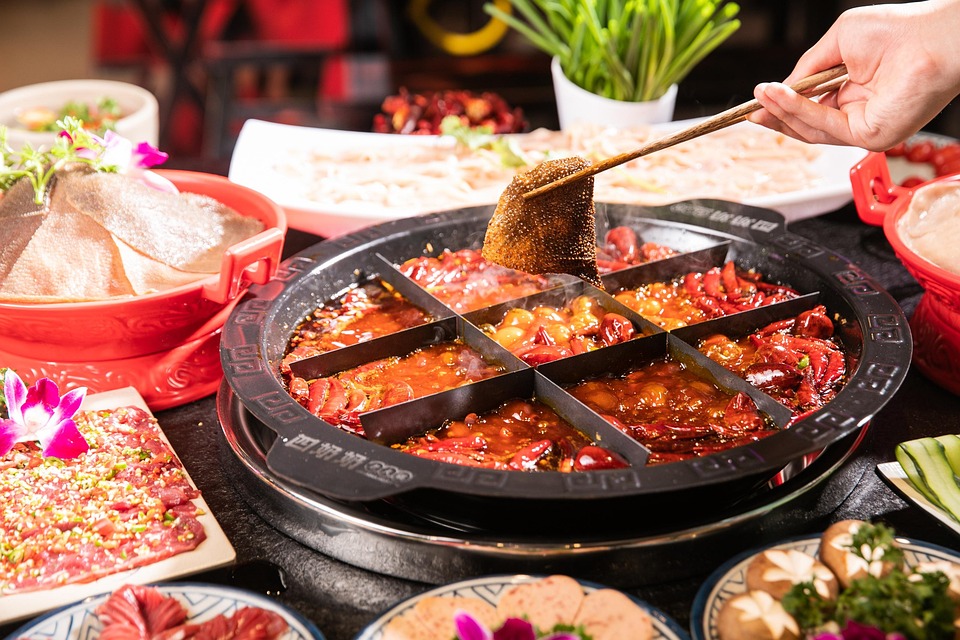In recent years, the culinary world has seen a resurgence in the practice of steaming, an age-old cooking method that has remained a staple in many cultures. While steaming is often lauded for its health benefits, such as preserving nutrients and reducing fat, its potential to enhance flavors in a dish is where the true magic happens. Today, we’ll explore the flavor-enhancing secrets of steaming that can elevate your cooking from ordinary to extraordinary.
The Art of Steaming
Steaming is not just a cooking technique; it’s an art that can transform simple ingredients into flavorful dishes. This method uses hot steam to cook food, retaining moisture and flavor in a way that other cooking methods cannot. Here’s how steaming becomes a secret weapon for chefs and home cooks alike.
1. Preserving Flavor and Nutrients
When vegetables are steamed rather than boiled or sautéed, they retain more of their natural flavors and nutrients. The short cooking time and gentle heat help to lock in those bright, fresh flavors that can be lost through other methods. For example, steaming broccoli not only keeps its vibrant green color intact but also leaves it crisp and full of its unique flavor profile.
2. Infusing Aromatics
One of the most exciting aspects of steaming is the ability to infuse flavors. By adding herbs, spices, or aromatics to the water beneath the steaming basket, you can flavor the steam itself, which then permeates your food as it cooks. Here are a few classic combinations to try:
- Herb-Infused Steam: Use fresh herbs like rosemary, thyme, or dill. These impart a nuanced flavor to vegetables, fish, and even chicken.
- Citrus Zest: Adding lemon or lime zest to the steaming water can brighten the flavor of seafood or veggies.
- Spices: Bay leaves, ginger, or even cinnamon can create unexpected yet delightful flavor notes.
3. Layering Flavors
Steaming also allows for strategic layering of flavors. You can steam vegetables and proteins together, allowing them to share moisture and flavor while cooking. For example, steaming shrimp with garlic and ginger over a bed of bok choy means that the shrimp absorbs the greens’ lovely flavors while imparting its savory essence onto them as well.
4. Texture Matters
Texture plays a crucial role in flavor perception. Steaming helps maintain the natural textures of food, leading to a more satisfying eating experience. Vegetables retain their crispness, fish remains tender, and dumplings emerge fluffy rather than soggy. This textural integrity enhances the overall flavor experience, making each bite more enjoyable.
5. Perfect for Marinades
For dishes that require marinating, steaming can work wonders. If you pre-marinate your proteins before steaming, the gentle heat allows the marinade to permeate deeply. This means that you’ll have not just a surface flavor, but a deeply infused taste that penetrates through, giving you a burst of flavor with each bite.
6. Versatile Cooking Method
Steaming isn’t just for vegetables; it can be used for grains, seafood, dumplings, and even desserts. Rice cooked in a steamer can take on a fluffy texture, while desserts like puddings or cakes can emerge light and airy. This versatility means that you can integrate steaming into virtually any meal, enhancing flavors throughout your entire menu.
7. Aromatic Additions
Enhance the aroma of your dishes by adding flavor boosters directly during the steaming process. Lemongrass, garlic cloves, or chilies in the steaming water introduce aromatic elements that elevate steamed dishes, making them even more enticing.
Steaming Techniques
To make the most of steaming, consider these practical tips:
- Choose the Right Equipment: Invest in a good-quality steamer—be it a bamboo steamer basket, a stainless steel tiered steamer, or an electric steamer. Each type has its own benefits, so choose based on your needs and preferences.
- Don’t Overcrowd: Leave space between items in the steaming basket to ensure even cooking. Overcrowding can lead to uneven results and a steamy mess.
- Timing is Key: Each ingredient has its perfect steaming time. Delicate vegetables might only need a few minutes, while denser foods like potatoes may require a longer session.
Conclusion
Embracing steaming in your cooking not only promotes health but also enhances the flavors of your ingredients in surprising ways. From infusing herbs into your dishes to preserving the natural goodness of your food, steaming can elevate your culinary creations. Next time you’re in the kitchen, consider steaming as your go-to method for unlocking delicious, complex flavors that will impress any palate. So go ahead—give your dishes the flavor boost they deserve with the steam technique, and enjoy the delightful results!



